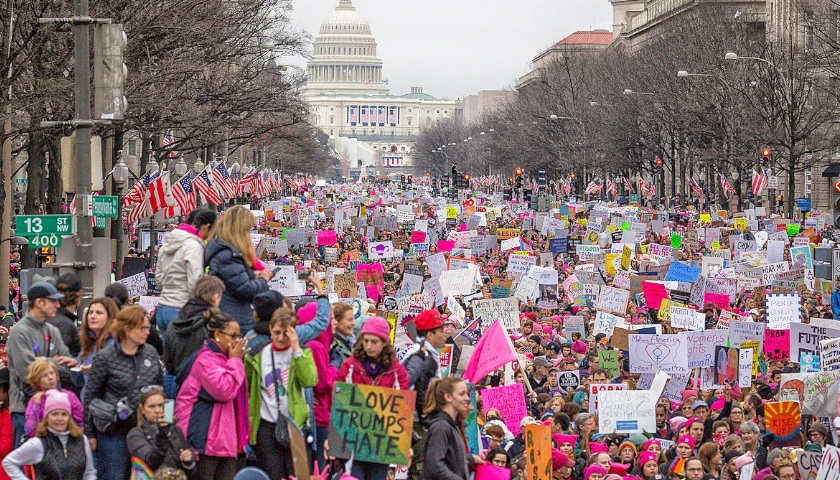by Larry Sand
It’s no secret that chronic absenteeism has skyrocketed since the pandemic. As The 74s Linda Jacobson writes, a new analysis of federal data released in late 2023 shows the problem may be even worse than previously understood.
The report from Johns Hopkins University shows that two out of three students were enrolled in schools with high or extreme chronic absenteeism rates during the 2021-22 school year—more than double the rate in 2017-18. (Students who miss at least 10% of the school year, or roughly 18 days, are considered chronically absent.)
Additionally, the researchers looked at 2022-23 figures from 11 states. The data show that overall chronic absenteeism levels remain at 28%, well above the pre-pandemic level of 16%.
Hence, it’s time to stop blaming the COVID-related school shutdowns for the high absence rates and look elsewhere. Education reformer Roman Stearns maintains that absenteeism is caused by students who don’t find school “interesting, engaging or relevant for their futures.”
Centralized, bureaucratized, and unionized education often creates a dreary, one-size-fits-all educational experience. The system also holds teachers accountable not to students and their parents but rather to school administrators.
Some of the fixes to the increasing absence rate show the ineptitude of our educational “leaders.” To stanch the rampant absenteeism in Los Angeles, the school cognoscenti have inaugurated a “student-inspired (lunch) menu that will be available at every school in the district.” The district also told parents that it’s okay to send their sick kids to school. While COVID is still a no-no, if a kid just has a bad cold—with a runny nose and a hacking cough? Come on in!
In Ohio, where absence rates are ballooning, lawmakers are desperate and are proposing paying children to attend school.
Hence, it’s no wonder that a 2023 Gallup poll revealed that Americans have soured on public education. Just 26% of respondents indicate a “Great deal/Fair amount” of confidence in our government-run schools.
Better than accepting bribes, parents should take charge of educating their kids. To that end, a new study shows that parent-led tutoring efforts in Oakland “produced similar gains in reading for young students as instruction from classroom teachers—a nod that could fuel similar efforts in other districts.”
The evaluation from the Center on Reinventing Public Education at Arizona State University also calls community members “untapped pools of talent” in the effort to improve student achievement.
Also, homeschooling rates continue to rise. Brian Ray, founder and president of the National Home Education Research Institute, reports that there were about 3.1 million homeschool students in 2021-2022 in grades K-12 in the United States (roughly 6% of school-age children). He adds that there were about 2.5 million homeschool students in spring 2019 (or 3% to 4% of school-age children.) Ray asserts that “the homeschool population had been growing at an estimated 2% to 8% per annum over the past several years, but it grew drastically from 2019-2020 to 2020-2021.”
Needless to say, the education establishment is none too happy with this turn of events.
Teacher union honchos and their establishment toadies don’t like homeschoolers for obvious reasons. When kids learn at home, it means less control, money, and power for them. Over the years, the National Education Association has adopted resolutions at its yearly convention stipulating that homeschooling families “cannot provide the student with a comprehensive education experience.” The union also insists that instruction “should be by persons who are licensed by the appropriate state education licensure agency, and a curriculum approved by the state department of education should be used.”
In November, the leftist Axios warned that homeschooling can “prevent children from learning about and being exposed to other kids from different backgrounds.” Clueless American Federation of Teachers president Randi Weingarten tweeted the story, adding her predictably loopy thoughts: “If we dealt w/ gun violence, had robust anti-bullying programs & provided more services for special needs students, many of these parents wouldn’t feel compelled to homeschool.”
One form of homeschooling that became popular during COVID, when schools were shuttered, was the “pandemic pod,” which made union bosses jumpier than ever. The pods, a form of microschooling, sprang up because many parents rightfully felt that their schools’ online learning program was inadequate. Pods are home-based, where parents team up with other local families to teach their children.
NEA president Becky Pringle worried at the time that “pods will become more widespread and damage a public education system already reeling from budget cuts and struggling to fund COVID-19 safety measures.” This, in turn, could “open the door for more inequity, segregation, and unsafe workplaces, since pods are expensive and unregulated.” Randi Weingarten dismissed the pods as a “pandemic band-aid.”
As all this was unraveling in late 2020, then Cato Institute scholar Jason Bedrick and EdChoice fellow Matthew Ladner released “Let’s Get Small: Microschools, Pandemic Pods, and the Future of Education in America,” a report on the new phenomenon. In the summary, they wrote that COVID has “spurred the dramatic rise of microschools and ‘pandemic pods’ as school districts’ reopening plans (or lack thereof) drove desperate parents to explore alternative education options. For many microschooling or podding families, these options are merely temporary, intended to get them through the pandemic. However, given the considerable growth in microschooling in recent years, there are reasons to believe that the pandemic accelerated a growing trend that could significantly reshape K–12 education in the United States.” (While pods tend to be independently parent-led, microschools can be affiliated with an official network and have a paid instructor.)
For the sake of simplicity, Bedrick and Ladner used the terms pandemic pods and microschools interchangeably. The researchers found that microschools offer students and parents flexibility, customization, and academic quality. Importantly, they note that microschools are “much more affordable than traditional public or private schools, because they don’t require expensive buildings and large staffs. Tuition at most Acton Academies ranges from about $4,000 to $10,000.”
Microschools can operate pretty much anywhere. Storefronts, empty church classrooms, libraries, offices, indoor playgrounds, outdoors at local parks, American Legion halls, and even living rooms.
One innovative approach to microschools is Revolution School, a private, accredited high school located in an office building in downtown Philadelphia. The school opened in 2019 with a small freshman class, and today has 31 students in ninth through twelfth grades, with grade-mixing being a common feature. In fact, Kerry McDonald, Senior Fellow at the Foundation for Economic Education, thinks that every office building should have a microschool.
Andrew Campanella, chairman of the National School Choice Awareness Foundation, is a big supporter of microschools. He explains that the model is small by design, “typically with 15 or fewer students of varying ages per class. It fosters a personalized and community-centric approach to learning that is especially effective in addressing the unique educational needs of diverse student populations. Programs like Education Savings Accounts are helping to fuel these microschools.”
In “School Is for Everyone,” New York Times writer Anya Kamenetz lavished praise on 19th-century education reformer Horace Mann, who in the 1830s saw public schools as a “crucible of democracy.” His goal was to have the state take over schools and increase taxes to pay for them.
Mann and his acolytes insisted that shifting the reins of educational power from private to public hands would “yield better teaching methods and materials, greater efficiency, superior service to the poor, and a stronger, more cohesive nation.” He even ventured to predict that if public schooling were widely adopted and given enough time to work, “nine-tenths of the crimes in the penal code would become obsolete,” and “the long catalogue of human ills would be abridged.”
Clearly, Mann was dead wrong. Almost 200 years later, our nation, with its massive education bureaucracy, is more divided than ever, crime is skyrocketing, and we have more “human ills” than we can handle. And taxpayers fork over billions of dollars in the process.
As such, if we can’t get state-run schools out of education entirely, we must do what we can to advance microschooling and other forms of government-free learning.
– – –
Larry Sand, a retired 28-year classroom teacher, is the president of the non-profit California Teachers Empowerment Network – a non-partisan, non-political group dedicated to providing teachers and the general public with reliable and balanced information about professional affiliations and positions on educational issues. The views presented here are strictly his own.



